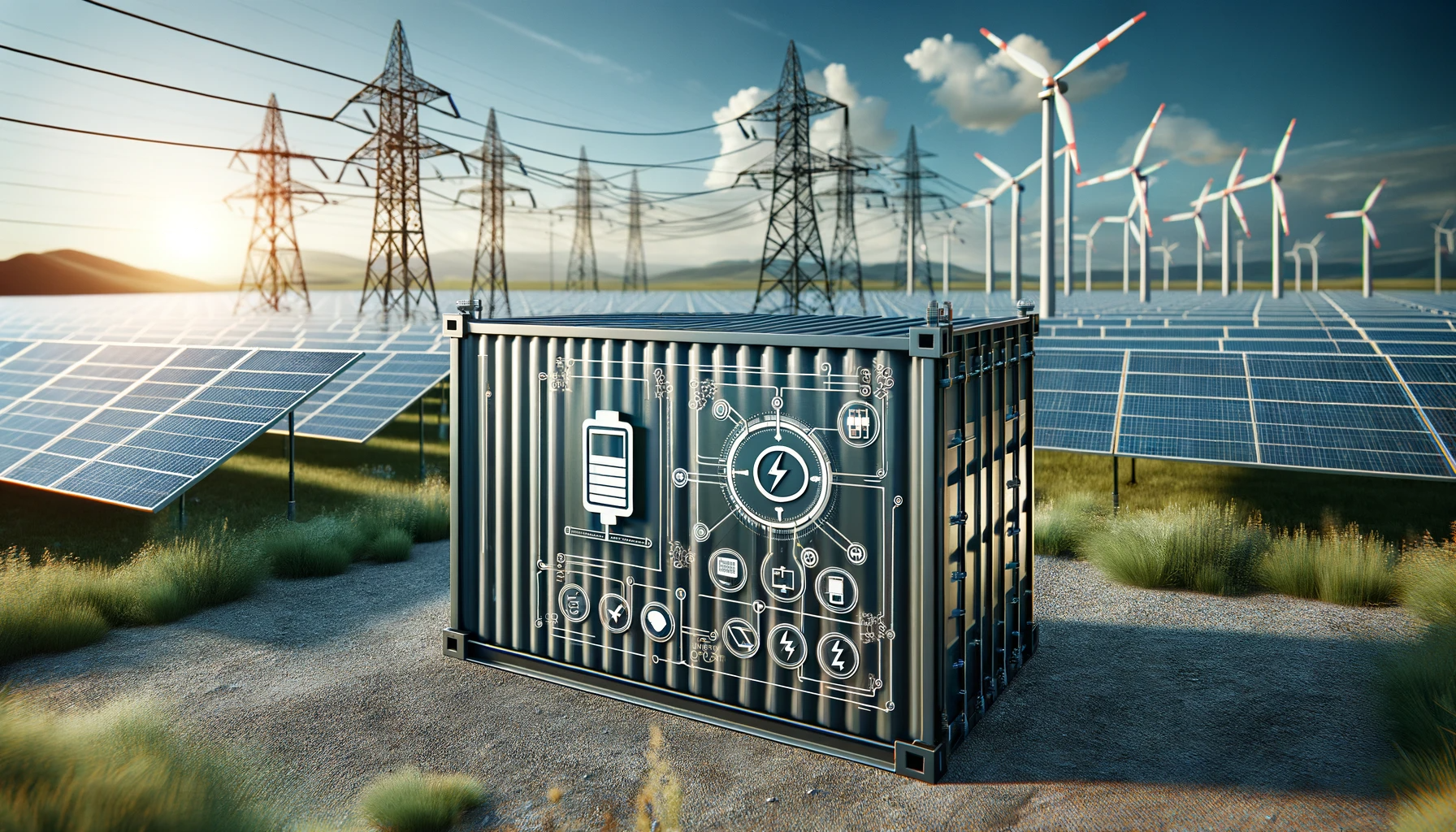Your Business and Energy: Navigating Inertia in Renewable Power

Renewable energy production is intermittent and can cause instabilities in power grids: batteries can help stabilize these fluctuations. As discussed in our previous episode, electricity consumption and production must be balanced at all times to avoid the risk of blackouts. When the sun shines, it shines for everyone at once, sometimes leading to production exceeding demand. This imbalance complicates the balancing process and also decreases the intrinsic value of this energy due to overabundance, a phenomenon known as «kWh price cannibalization.» Additionally, network equipment wasn’t designed to absorb energy in reverse, leading to congestions that trigger inverters. Moreover, renewable energy production can vary rapidly. A sudden gust of wind or unexpected cloud cover over a solar farm can drastically change production levels.
In summary, renewable energies can be excessively abundant, deficient, or unstable, often misaligned with our personal or industrial needs. We’ve learned the hard way that a significant shift in our energy mix has technical and economic consequences. Fortunately, batteries equipped with converters, if deployed in sufficient quantities, could provide the flexibility that electric grids desperately need.
Managing Highly Volatile and Sensitive Production
Renewable energy production is not only irregular and somewhat unpredictable but also very «sensitive» due to being linked to power electronics with near-instantaneous reactivity. For example, cloud cover over a solar field translates into a sudden drop in production, which must be compensated for with alternative production of equal responsiveness to avoid affecting the grid frequency.
On the other hand, traditional power plants, like nuclear or hydroelectric, rely on alternators with substantial inertia. Their mass helps maintain a stable frequency for a time, despite fluctuations in production or consumption. Gas plants were widely used for flexibility but are now expensive and unpopular.
«With the power electronics in our batteries, the response is immediate. If a frequency difference is detected, the battery can rapidly respond to both production and consumption. The system immediately regulates supply and demand,» explains Gilles Geron, Project & Product Manager at CE+T. «Large solar or wind installations should have a ramp system, reintroducing a form of inertia, to avoid power variations due to clouds and wind gusts. By distributing intelligent storage systems both on the grid and within renewable energy-producing companies, we have the large-scale capacity to relieve the network.» Batteries can be used preventively to smooth out production variations or curatively to respond to a network imbalance. They also serve as a means for energy trading to reduce and control energy costs.
Considering Production as a Mix to Balance
With the growth of heating systems and electric vehicles, companies’ electricity needs tend to increase, and many are investing in photovoltaic panels or wind turbines. However, these alternative productions are far from covering all needs.
«The answer must be multifaceted,» explains Patrick Hendrick, a professor at the Polytechnic School of ULB. «Before 20 or 30 years, we cannot do without nuclear power. Fortunately, significant advancements will enable the use of 4th generation nuclear reactors that produce less radioactive waste. In parallel, promoting biomass, hydroelectric, batteries, and hydrogen is essential, offering attractive incentives to achieve some inertia.»
To manage various production means, users, and batteries within the company, CE+T offers converters that adapt and interface with different storage units. The developed software can integrate blockchain technology, enhancing system performance and self-regulation capabilities.
Advantages of ‘Good’ Power Electronics
- Provides intelligent response, either rapid or gradual, depending on the use case
- Offers various services adaptable to price signals, known as Value Stacking
- Ensures uninterrupted economic activity in case of network failure
- Filters most, if not all, disturbances transmitted through the network
Illustrating with a Real-Life Case Study
A partner of CE+T have implemented an innovative solution for balancing the electric grid’s frequency. Their solution includes batteries, an Energy Management System (EMS) interconnected with CE+T Hercules equipment (a power converter) and Inview (a monitoring and control system), as well as renewable energy sources like solar panels.
Inview is connected to the EMS, acting as a real-time data reception center from the network. When network frequency deviations occur, the EMS quickly sends instructions to Inview, which then communicates with the Hercules to initiate necessary corrective actions (temporarily suspending energy consumption from the solar panels, using battery reserves, or reinjecting excess energy into the network). This reactive approach ensures network stability and highlights the crucial role of inertia in maintaining this stability.
Thought of the month: Renewable Energies, Batteries, and AI – The Winning Trio for the Future
«In the future, AI will help us manage all energy sources in the network and the users. The system will be capable of self-regulating and even isolating faults before they occur, preventing problems like hacking. Renewable energy producers equipped with batteries will then be able to support the network,» says Mario Barbaresso, CEO of CE+T America.